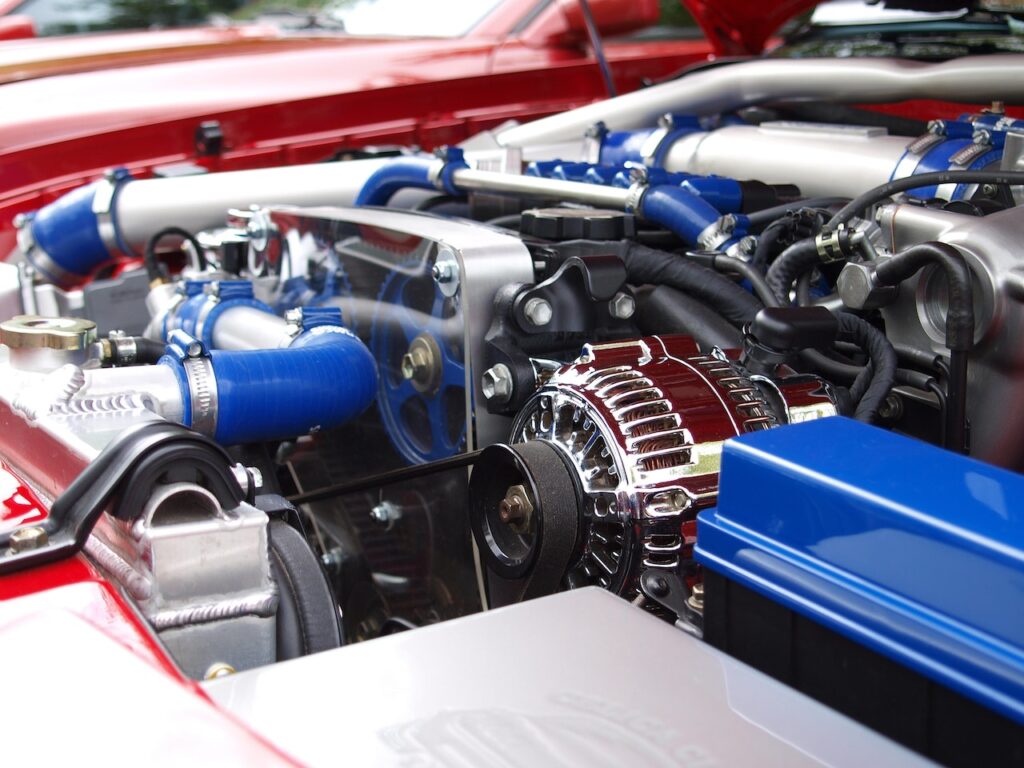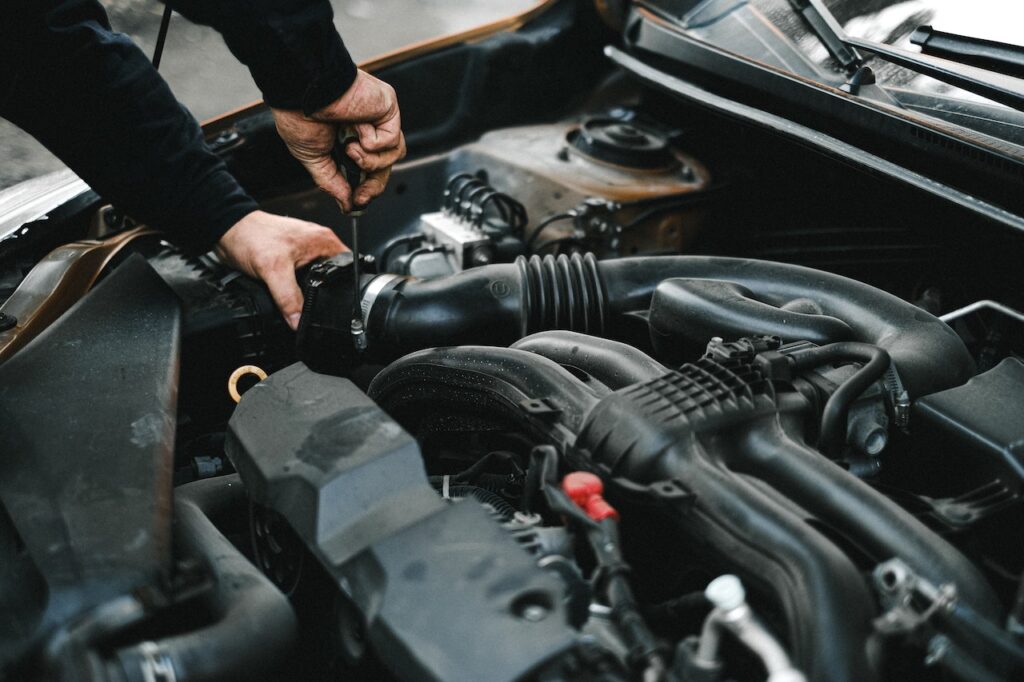A combustion engine, also known as an internal combustion engine, is a type of engine that generates mechanical power by burning fuel inside the engine. It is the most common type of engine used in automobiles and many other machines that require a source of mechanical power.
The basic principle of a combustion engine is the combustion, or burning, of a fuel mixture inside the engine. The fuel mixture typically consists of a hydrocarbon fuel, such as gasoline or diesel, and air. The combustion process generates high pressure and temperature inside the engine, which causes the engine’s pistons to move and generates mechanical power.
There are two main types of combustion engines: spark-ignition engines and compression-ignition engines.
Spark-ignition engines, also known as gasoline engines, use a spark plug to ignite the fuel mixture inside the engine. The spark plug generates an electrical spark that ignites the fuel mixture, causing it to burn and generate mechanical power. A perfect example of this are traditional gas-powered lawn mowers.
Compression-ignition engines, also known as diesel engines, use compression to ignite the fuel mixture inside the engine. The fuel mixture is compressed inside the engine, causing it to heat up and ignite spontaneously, without the need for a spark plug.
Regardless of the type of engine, the basic components of a combustion engine are similar. The engine consists of a cylinder block, which houses the engine’s cylinders, pistons, and other components. The cylinder block is typically made of cast iron or aluminum and is designed to withstand high pressures and temperatures.
The engine’s pistons move up and down inside the cylinders, driven by the combustion process. The pistons are connected to a crankshaft, which converts the linear motion of the pistons into rotational motion, generating mechanical power.
The fuel mixture is introduced into the engine through an intake valve, which opens to allow the mixture to enter the cylinder. The fuel mixture is then compressed inside the cylinder, causing it to ignite and generate high pressure and temperature. The pressure of the expanding gases pushes the piston down, generating mechanical power.
After the fuel mixture has burned and the piston has moved down, the exhaust gases are expelled from the engine through an exhaust valve. The exhaust valve opens to allow the gases to exit the cylinder, and a series of pipes and components direct the gases out of the engine.
Combustion engines have been used in various applications for over a century and are still the most common type of engine used in transportation and other industries. They are efficient and powerful, and advancements in technology have made them cleaner and more environmentally friendly. However, with the growing concern for climate change, there has been a shift towards electric and hybrid engines, which are more efficient and emit less pollution. s environmental concerns grow and the push for cleaner technologies intensifies, there is a rising interest in alternative power sources, such as electric vehicles, which produce zero tailpipe emissions. Electric vehicles are gradually gaining popularity in Arizona and are seen as a more sustainable option for the future.

Despite the shift towards electric and hybrid engines, combustion engines are still widely used and are likely to continue being used for many years to come. They are particularly popular in industries such as transportation, where they offer a high degree of power and reliability.
In recent years, advancements in technology have led to improvements in the efficiency and environmental impact of combustion engines. For example, modern engines are designed to be more fuel-efficient, reducing emissions and increasing fuel economy.
Additionally, hybrid engines combine the benefits of both combustion and electric engines, using a combination of gasoline or diesel and electric power to improve fuel efficiency and reduce emissions. This has led to an increase in the popularity of hybrid vehicles, particularly in the automotive industry.
Despite these advancements, combustion engines still have several limitations. They are inherently less efficient than electric engines, as a significant portion of the fuel’s energy is lost as heat. Additionally, combustion engines emit pollutants such as nitrogen oxides and particulate matter, which can contribute to air pollution and have negative health effects.
To address these limitations, there is ongoing research into the development of cleaner and more efficient combustion engines. This includes the use of alternative fuels such as hydrogen or biofuels, which can reduce emissions and improve efficiency.
Who Invented It?
The invention of the combustion engine was not the work of any one person, but rather a culmination of developments and improvements made over many years by several different inventors and scientists.
The first recorded example of an internal combustion engine was developed in the early 1800s by a French engineer named Étienne Lenoir. Lenoir’s engine used a mixture of coal gas and air, which was ignited by an electric spark to produce power.
Later, in the 1860s, a French engineer named Alphonse Beau de Rochas developed a theoretical four-stroke engine cycle that is still used in many modern engines today. Rochas’ cycle consisted of four stages: intake, compression, ignition, and exhaust.
In the 1870s, a German engineer named Nikolaus Otto developed the first practical four-stroke combustion engine, which was later named the Otto engine. The Otto engine used a carburetor to mix fuel and air, which was then ignited by a spark plug to produce power.
Around the same time, another German engineer named Gottlieb Daimler developed a two-stroke combustion engine, which was more compact and simpler than the four-stroke engine. Daimler’s engine was used in the development of the first automobile, and his company later merged with Karl Benz’s company to form Mercedes-Benz.
Over the following decades, many other inventors and engineers continued to make improvements to the combustion engine, leading to the development of more efficient and powerful engines.
Today, the combustion engine continues to play a significant role in transportation and industry, and advancements in technology are continuing to improve its efficiency and reduce its environmental impact. While the future of the combustion engine is uncertain, its impact on modern society cannot be overstated.
Overall, the combustion engine has been a key driver of technological innovation and has played a significant role in the development of modern transportation and industry. Despite the emergence of alternative powertrain technologies, combustion engines remain a dominant force on Arizona’s roads. They provide reliable and efficient transportation solutions for both personal and commercial use, supporting the state’s economy and maintaining its transportation infrastructure. While the future of combustion engines is uncertain, it is likely that they will continue to be used for many years to come, albeit with improvements to their efficiency and environmental impact.
Content generate by ChatGPT
